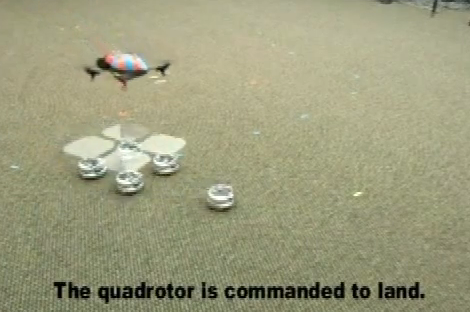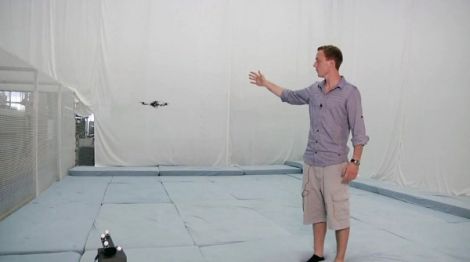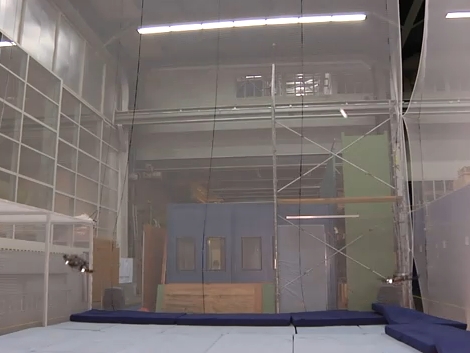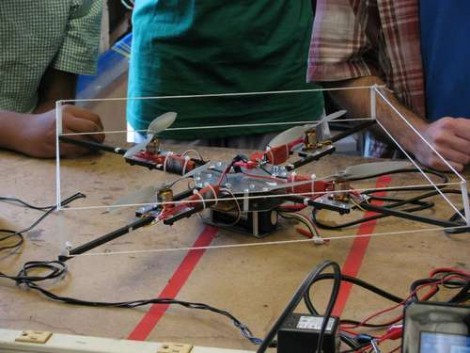
Swarm robotics is really starting to produce some interesting results. This image is from the video embedded after the break that show a group of five robots creating a landing platform for a quadrotor helicopter. The four that actually make up the platform are not in contact with each other, but instead following commands from the leader. We’re impressed by the helicopter’s ability to target and land on the moving platform. Takeoff appears to be another issue, as the platform bots stop moving until the quadcopter is airborne again.
These robots are part of a Graduate project at Georgia Tech. [Ted Macdonald] has been working along with others to implement an organizational algorithm that guides the swarm. The method requires that the robots have an overview of the location of all others in the swarm. This is done with high-speed cameras like we’ve seen in other robotic control projects. But that doesn’t discourage us. If you already have a flying robot as part of the swarm, you might as well add a few more to serve as the eyes in the sky.
Continue reading “Robots Listen Only To The Leader When Building A Roving Quadcopter Landing Pad”
















